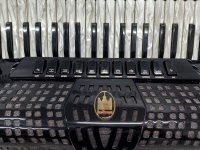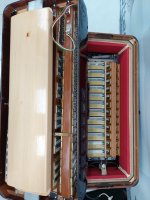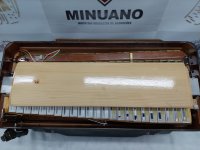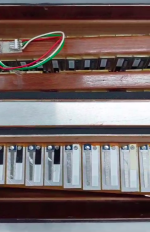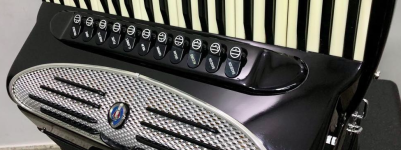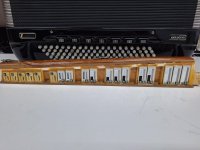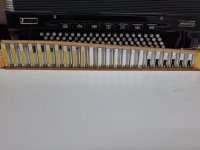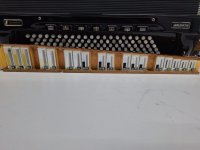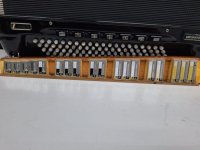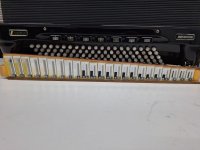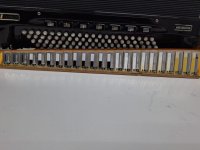Unfortunately, it's not desirable here either ;-;
In any case, we've got news! The seller got back to my friend and now we're quite puzzled, to put it mildly. He sent us the photo of the registers' names (attached) and, although the dot marks on them are indeed those typical of a LMMM model, the name of the register with the middle dot mark is "piccolo". Also, we heard attentive to the video showing the accordion's sound again and, indeed, we can posit that it's a piccolo (either that, or it's the highest M castle ever made: the notes are VERY piccolo-like high).
We've thought of some possible explanations for this. For instance, this simply may be due to a factory mistake (i.e., they used LMMM registers in a LMMH model by accident). It's a complex instrument, so errors like this are bound to happen (and, as previous posts in this threat show, this kind of mistake is quite easy to go unnoticed). If that's the case, we sincerely doubt that, even if the original buyer noticed this mistake, he'd go through the hassle of going through all the steps to have it fixed. Personally, I never saw anything like this but, based on other stories I've heard, I wouldn't be surprised in the slighest if something like the aforementioned scenarios happened.
Another possible explanation is that the buyer may have acquired a LMMM model and requested it to be modified to a LMMH, and Beltuna forgot to change the reeds' marks (or simply couldn't be arsed to do so). If that's the case, we're fairly certain that it was a job made by Beltuna itself. As shown in the remaining images, the reed blocks are too uniform and similar (wood work looks exactly the same) for them to have been made by anyone else. They most likely were made at the same period, with the same materials.
The last explanation we came to is the one you suggested: the H castle may be in the chamber, and Beltuna marked the reeds differently due to this exotic configuration. We requested photos os the block reeds alone, to make sure. This will make things a lot more clear.
In any case, what do you guys think? He's still very interested in the instrument (it's amazing and sounds great, after all), but it's too damn expensive for him to bee too trigger-happy with his decision. IMHO, I believe it to be worth it (albeit I'm too naive on the subject to make an objective recommendation). However, given the elephant in the room, every additional consideration/perspective/opinion is of great value


